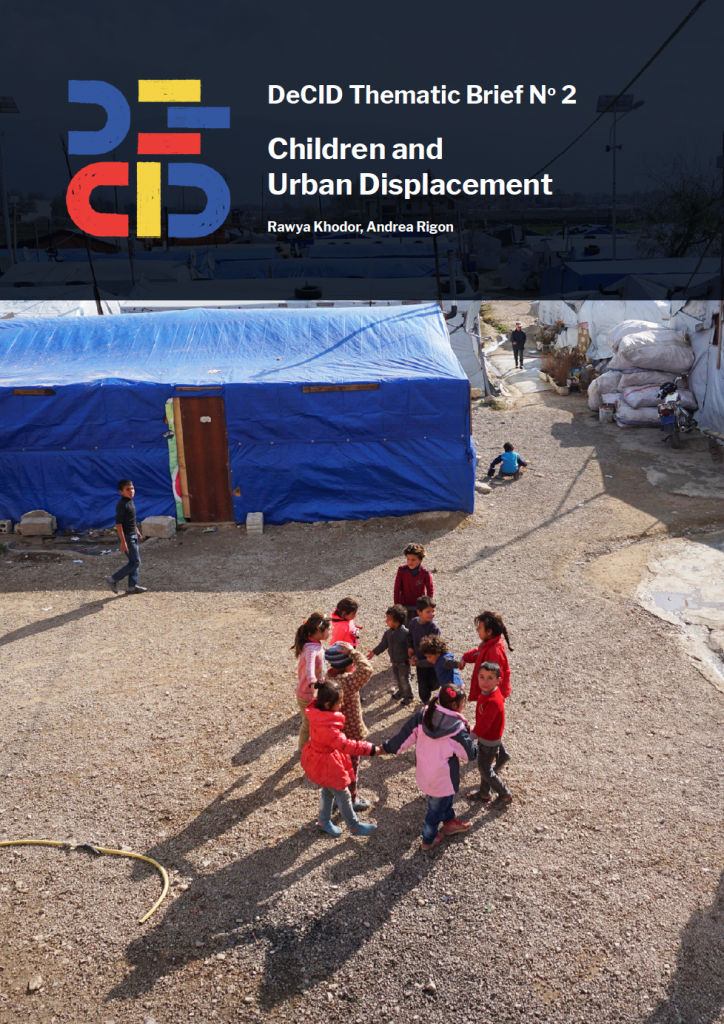The global phenomenon of displacement continues to be on the rise and is taking on a “forced” and “protracted” nature. It has also become predominantly “urban”, which presents particular challenges for displaced persons’ access to services, including children. Displaced children are especially vulnerable in such contexts, putting their health, education, and security at risk.
“Children and Urban Displacement” (pdf, 4 MB) by DeCID Researcher Rawya Khodor and Principal Investigator Dr Andrea Rigon is the second thematic brief which aim to explore the topics of children affected by displacement in an urban context.
This thematic brief sets out the broad context of displacement, with a specific focus on urban areas. It further reflects on the service provision and access to services of displaced persons and children, and on what has been done at the global level to respond to challenges of displacement in urban settings.
Key points highlighted in the brief:
- The number of displaced people around the world is at a record high as a result of persecution, conflict, violence, disasters, and human rights violations.
- Almost 15.9 million (61%) of all refugees were in protracted situations* at the end of 2018. Of this number, 5.8 million were in a situation lasting 20 years or more.
- In 2018, the proportion of the refugee population based in urban settings was estimated to be at 61%.
- 32.2 million internally displaced persons (IDPs) reside in large, medium and small cities, making up 80% of global cases.
- In urban areas, displaced people often end up living with the urban poor, who are also socially and economically marginalised, in peripheral slums.
- On a global scale, nearly 31 million children had been forcibly displaced by 2017. This number includes 13 million refugee children, representing approximately 52% of the world’s refugee population in 2017, up from 41% in 2009. It also includes an estimated 17 million children displaced by violence and conflict within their own countries, and approximately 936,000 asylum-seeking children.
- In different contexts of displacement, children constitute a large proportion of the total displaced population.
Download the research brief here (pdf, 4 MB)



